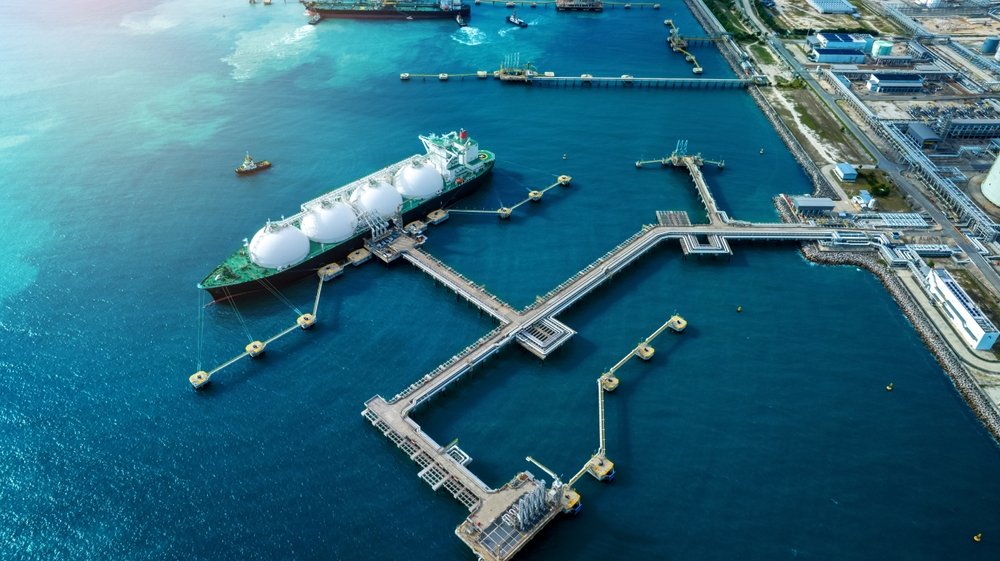Europe is realigning its energy policy and, to this end, is concluding a long-term gas deal with major US fracking companies, which is altering key market structures. This move is forging a new energy alliance that severely limits political decision-making. At the same time, the question of security of supply is moving to the forefront, as the EU is basing its model on expensive LNG. The entire energy policy is thus shifting more towards Washington. This creates a new supply constraint that limits Europe’s room for maneuver. In parallel, the complementary gas agreement is gaining in importance, as it shapes the transatlantic energy strategy. (reuters: 06.11.25)
Gas Deal and Geopolitical Interests
In the US, LNG facilities such as Rio Grande, Port Arthur, and Calcasieu Pass are expanding rapidly. This expansion strengthens the energy alliance between the two sides and deepens the underlying alliance concept. European customers are accepting rising liquefaction charges, which is tightening supply commitments. This positions the US as a key supplier, while Europe bears higher costs. This development is directly linked to the gas deal, which establishes long-term offtake obligations.

According to a Reuters report, US LNG producers signed contracts for 29.5 million tons annually in the first ten months of 2025 alone. This volume significantly exceeds the previous year’s level and signals a stabilization of energy prices, which is increasingly forcing European companies into this supply structure. Particularly striking is the rise in liquefaction charges to between $2.30 and over $2.75 per mmBtu. This price range increases the burden on European consumers and undermines aspects of their existing security of supply.
Oversupply and Increasing Economic Burdens
At the same time, global supply is increasing significantly. New US capacity is coinciding with Qatari megaprojects, which will push additional volumes into the market starting in 2027. Experts anticipate a global oversupply. Europe will hardly benefit from this, as the gas deal stipulates long-term conditions that make flexible pricing difficult. This reduces energy reliability, even though large quantities are available. Simultaneously, it creates a supply constraint that allows only limited adjustments.
Energy-intensive industries in Europe are feeling this pressure particularly acutely. High import prices are straining supply chains, while competitors in Asia and North America benefit from lower energy costs. This development demonstrates the profound impact of this strategic direction on economic decisions. Companies are shifting investments or reducing production. The energy policy is thus leading to structural disadvantages that are clearly visible in economically sensitive sectors.
Political Narratives and Economic Reality
Political representatives emphasize alleged progress in security of supply. However, the gas deal model creates dependencies that will burden Europe in the long term. US exporters are succeeding in enforcing higher fees, while European buyers generally comply with these conditions. The energy alliance appears harmonious to the outside world, but it masks the growing asymmetry. American companies secure stable revenues, while European consumers pay higher prices.
Furthermore, Europe is becoming more closely tied to a supply structure shaped by US interests. The negotiations strengthen US suppliers, as they ensure long-term capacity utilization. This development demonstrates how tightly the supply dependency has become entrenched. At the same time, energy reliability is declining on the European side, as adjustments to changing markets are only possible to a limited extent. As a result, the energy policy loses strategic depth.
An Expensive Model Without a Clear Perspective
Ultimately, the picture that emerges leaves little room for optimism. The gas deal is changing the fundamental structure of European energy supply, yet it offers hardly any reliable prospects for the future. Households are bearing high costs, industries are losing competitiveness, and yet policymakers are clinging to this strategy. The energy alliance is shifting the balance of power in favor of the US and binding Europe to expensive LNG for the long term.
The central question, therefore, is: How sustainable is a model that generates high costs while simultaneously creating a supply commitment that restricts economic flexibility? The coming years will likely show whether Europe can maintain this course.
